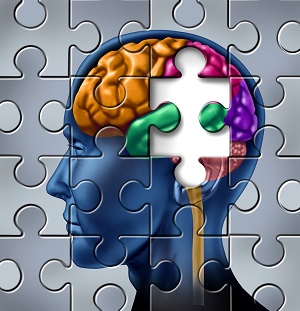13 Jun The Mind and its Brain
Mind-Brain Dualism
While brains can be weighed, minds are weightless. Despite some differences of opinion about what all to put on the scale, we can get usable numbers about brain weight and changes in brain weight due to certain phenomena such as changes in age. Of course, the mind and brain may be one and the same – there are two camps on the question. But I subscribe to the dualist theory that there is indeed a “ghost in the machine” (Koestler, 1967). I will lightly (very lightly) discuss some of the things we know about the central, peripheral and autonomic nervous systems and how they apply to human understanding.
While I was in the thick of my academic studies of these subjects at the University of Minnesota, my adviser was Dr. James Slagle. Dr. Slagle is credited by many as the inventor of the first Expert System (see also Winston, 1984). So here’s a little story – I swear this happened more than once! I was invited to join in a candidate presentation where the faculty candidate was presenting in a large, theater-like room with terraced seating and black-boards (this was the late 1980s) mounted across the entire 60 foot wide front of the room. The candidate started on the left side of the blackboards writing equations as he explained his remarkable but exceedingly complex theories. 45 minutes into the presentation the candidate had filled up most of the blackboard space with complex equations. I, for one, was approaching a state of catatonic stupor. I was not the only one in the room similarly disposed.

But I dutifully kept my head up, eyes open, and tried to figure out where the candidate was going with his explanation. At this point of impossible complexity, Dr. Slagle stopped the candidate and asked him to explain how the assumption he had just stated could possibly work, considering the formula he had presented ten minutes before. Dr. Slagle guided him verbally back to the point on the blackboard in question, and the candidate admitted that this was an inherent conflict his team had never resolved. Nobody else in the room was able to catch this discrepancy even though everyone else was seeing, and Dr. Slagle has been 100% blind since high school. The mind is an incredible thing.
| Understanding Context Cross-Reference |
|---|
| Click on these Links to other posts and glossary/bibliography references |
|
|
|
| Prior Post | Next Post |
| To Choose or not to Choose | Natural Intelligence |
| Definitions | References |
| Expert System | Winston 1984 |
| consciousness mind | Koestler 1967 |
| affective neuroscience | Scientific American |
| perceptiveness | Science Daily |
Modeling Mental Activity
My goal is to see how things we know about the brain and the mind may help us develop better models for automating brain tasks, including, but definitely not limited to human language understanding.Certain aspects of our cognitive apparatus lend themselves to imitation using advanced electronic technologies. The following brain theories may serve as bases for a model:
- Different areas of the brain and different types of neurons specialize in different functions.
- Synapses, or links between neurons, transmit different levels of local and action potential.
- The level of action potential transmitted over a synapse may differ for identical inputs.
- Formation of links between neurons is not random but specific and targeted.
- Thinking involves the flow of positive and negative action potential in and between neurons.
- Besides variable positive and negative voltages, synaptic transmissions vary in duration.
But these are just questions of nature. Arguably, the mind is as much or more a question of nurture than nature, at least, this is the dualist way of thinking. While a person’s brain is a bunch of molecules, a person’s mind is the product of a lifetime of social interactions, from the warm, gentle waters of the womb, to the cold, hard edges of the grave. When it comes to interpreting and understanding context, it may be suggested that the brain gathers the information and the mind is responsible for making judgments about it needed to derive usable interpretations.
Is it reasonable to begin by assuming mind brain dualism? Some interesting sources for looking into the mind and the brain are:
Please indulge me in my scientific analyses, as well as my softer searches through poetry to find the answers to these important questions. This mind/brain dualism finds expression in much of the work I’m planning to write about, even though most of the modeling approaches stand even if there is no difference between the mind and the brain.
| Click below to look in each Understanding Context section |
|---|









